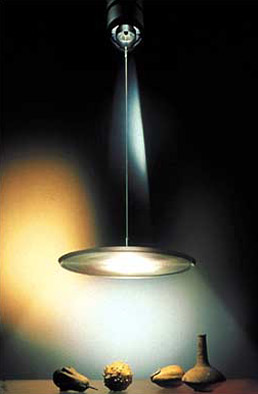When designing indoor lighting for energy efficiency, you want to consider
some basic design principles and methods.
Energy-efficient lighting design principles include the following:
Remember that more light is not necessarily better. Human visual
performance depends on light quality as well as quantity.
Match the amount and quality of light to the performed function.
Install task lights where needed and reduce ambient light elsewhere.
Use energy-efficient lighting
components, controls,
and systems.
Maximize the use of daylighting.
Here are some basic methods for achieving energy-efficient indoor lighting:
Install fluorescent light
fixtures for all ceiling- and wall-mounted fixtures that will be
on for more than 2 hours each day. These often include the fixtures
in the kitchen and living room, and sometimes those in bathrooms, halls,
bedrooms, and other higher-demand locations.
Install dedicated compact fluorescent fixtures, rather than compact
fluorescent lamps (CFLs) in incandescent fixtures, so that fluorescent
bulbs continue to be used for the life of the house.
Use CFLs in portable lighting fixtures that are operated for more
than 2 hours a day.
Use ENERGY STAR labeled lighting fixtures.
Use occupancy sensors for automatically turning on and off your lights as needed.
Consider light wall colors to minimize the need for artificial lighting.
If recessed lights are used in a ceiling with an unconditioned space
above it, use only Underwriters Laboratory (UL) approved fixtures that
are airtight, are IC (insulation contact) rated, and meet ASTM E283
requirements.

